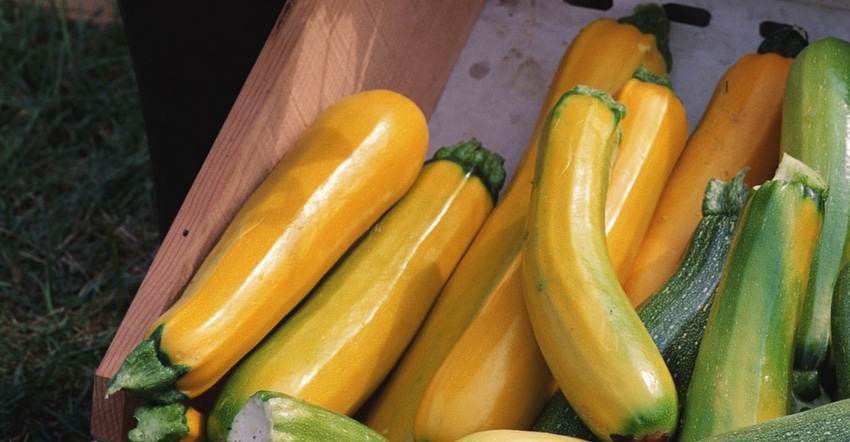January 15, 2018

Forecasters are standing by their prediction of a La Nina influenced winter across most of the southern half of the United States, which is supposed to bring warm, dry and mild winter conditions to the region. But as the early winter season settles in, vegetable growers in Texas, Florida and Georgia are wondering what went wrong.
Even as far south as Mexico, cold temperatures, hard freezes and even rare snow events have farmers scrambling for ways to keep their fields warm and winter vegetable plants alive.
In the usually warm Rio Grande Valley of Texas, at the very southern tip of the state, produce farmers are scratching their heads after cold, wet weather hampered early January harvest operations. Growers in the Valley are assessing how much damage their winter crops may have suffered.
"It's not a question of if we have damaged crops," said Bret Erickson, director of business development for J&D Produce in Edinburg. "It's a matter of how severe the damage is."
Worst Nightmare
Edinburg, Mission, McAllen and surrounding areas are the breadbasket of the Valley's winter vegetable crop. On the night of January 3, temperatures dropped into the upper 20s and remained below freezing for several hours, a winter vegetable grower's worst nightmare.
Along with the winter chill, caused by a plunging arctic front that barreled down from Canada bringing freezing rain, sleet, snow and sub-freezing temps to much of the middle part of the nation, frost was a problem for many southern growers as the cold air was over-ridden by warm moist air streaming in from the Pacific and Gulf coasts.
Danta Galeazzi, president of the Texas International Produce Association, said vegetable growers across much of Texas and farther south into Mexico had been hard at work leading up to the invasion of cold air, tempting to prepare crops and fields for the coming blast of winter weather.
"We have been working fast to water the ground to help keep soil temperatures up. We also have covered as many plants as possible to avoid direct contact with the chill, especially on our more valuable and at-risk crops," he reported.
Even a helicopter was called in to fly low over fields, an attempt to drive slightly warmer air down to the tops of celery plants during the coldest period, a last-ditch effort to save a crop that is ready for harvest.
Nearby, a cabbage farmer reported a slight sheen of ice on his plants, but said harvest operations, while delayed, were able to get most of the cabbage crop out of the ground, and most of the crop survived the cold fairly well.
Cold in Mexico
It wasn't just South Texas vegetable growers that suffered the damaging cold. In northern parts of Mexico, including in the State of Tamaulipas just across the Texas border, onion growers reported freezing temps. Citrus farmers in the Texas Valley and in Mexico were also worried about the exceptionally cold winter weather blast.
Galeazzi says, depending on the duration of the cold, many fruits and vegetables were subject to damage, which can range from leaf burns from the freeze on some plants to deeper damage to fruits and vegetables. Even worse, he says, hard and long enough freezing temperatures can put citrus trees at risk. Losing a tree is the biggest concern for citrus growers.
Even as far south as Oaxaca in southern Mexico, cold weather caused the delay of lime harvest. While temperatures didn't reach the freezing mark, growers there say it was a close call.
Back in the U.S., fruit and vegetable growers suffered setbacks, not only from freezing temperatures but also rare snowfalls.
Lisa Lochridge, with the Florida Fruit and Vegetable Association, reported freezing temperatures as low as 26 degrees worried many farmers, but because the cold was not sustained, most fruit and vegetable operations avoided substantial damages.
Florida strawberry growers were using frost protection measures ahead of the winter storm and reported on Jan. 4 that overall their strawberries had survived the cold weather snap. Growers in Florida and Georgia were drenching fields with water to keep ground temperatures up, and some say they believe the tactic worked to save their crops.
Onion growers in Georgia reported that a light snow cover may have blanketed their maturing crop and helped to allow ground warmth to protect them from the cold.
Adding to Damage
News of winter vegetable damage as a result of an unexpected winter blast in the south is expected to add to problems associated with losses last summer caused by other major weather events.
After hurricanes Harvey and Irma damaged U.S. vegetable crops near the end of summer, leading to extensive green bean shortages that sent prices higher, efforts to fill the supply gap through fresh plantings in the southeastern U.S. fell victim to tropical weather as well. In addition, the extreme heat and tropical storms in the western U.S. and Mexico have affected yields, as the cost of many types of vegetables and produce spiked, including the price of Brussels sprouts and broccoli.
The U.S. Department of Agriculture reported U.S. broccoli prices at $54.80 per hundredweight, up 53 percent year on year. Other vegetables seeing large price increases include cucumbers, up 33 percent year on year at $34.50 per hundredweight; sweet corn, up 46 percent at $54.70 per hundredweight; and onions, up 131 percent at $15.60 per hundredweight.
You May Also Like




